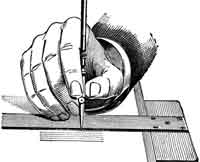Difference Between CVA and TIA

CVAÂ vs TIA
There are a great number of things that may adversely affect the cardiovascular system. One of the worst of these  is overeating. If you follow a diet that is full of transfats and grease, you could experience heart ailments or hypertension. Fortunately, however, itoday there are a number of doctors who can help treat your condition before it gets worse.
Â
The world over cardiovascular ailments are second only to smoking and cancer when it comes to the cost of health care, according to the WHO. A lack of exercise, coupled with an unhealthy diet, predisposes people to develop cardiovascular conditions that could eventually lead to either worsening complications or even death..
Â
Two of the possible outcomes of a very high cholesterol diet are TIAs and CVAs. There are different factors for the two conditions, but, one common cause could be lifestyle.
CVA is an abbreviation for cerebrovascular accident or stroke. It is defined as the rapid loss of neurological function mainly because of an occlusion in the major blood vessels supplying the brain, or from a hemorrhage. However, for a CVA to be considered a stroke, the person must have a neurological blood supply deficit for more than 24 hours. One of the causes for a CVA could be a former case of hypertension related to the diet and lifestyle of the patient.
The common symptoms of a stroke or CVA are an inability to move part of the body or the limbs, blurring of vision and difficulty in speaking. It is also commonly observed that patients suffering a CVA are find it hard to formulate speech as well as to process conversations. This condition could be deadly, especially if the blood supply deficit becomes severe and goes on for several hours.
The main underlying principle for the treatment of CVAs is to treat the cause of the stroke. If the patient has a thrombus that caused the occlusion, the patient can be given aspirin and anticoagulants or, in medical emergencies, thrombolysis. After a CVA, the patient needs to be given proper physical therapy in order to regain the control in the part that was affected.
A TIA, on the other hand, is similar to a stroke mainly because it can also be caused by an occlusion that is diet -related. The main difference between a CVA and a TIA, however, is the duration. A TIA only lasts for 24 hours. If it exceeds 24 hours, the condition will be considered as a CVA. The medications for a TIA are basically the same as for a CVA. It also involves aspirin and anticoagulants like Warfarin and heparin.
The symptoms for a TIA depend on what area of the brain is affected. Often the recurrence of TIAs can cause an alarming number of neurons to die and, because of this, doctors ardvise  their patients to modify their lifestyles as the first line of defense.
Â
- TIAs and CVAs both affect the neurologic function of a patient.
- A TIA only goes on for 24 hours until its symptoms subside. However, a CVA lasts  for more than 24 hours.
- Diet and lifestyle can be the cause of both TIAs and CVAs.
- A CVA has more devastating effects and could even cause death while a TIA can be milder.
Â
- Difference Between CNBC and Fox Business - October 3, 2011
- Difference Between Distilled Water and Boiled Water - September 30, 2011
- Difference Between McDonalds and Burger King - September 30, 2011

It is 15 months since my cva.although back at work i struggle and tire easily.can i assume this is as good as i get.
john
John—- very interested in ur comment. I just had a CVA 3 days ago….. can I live a normal life..???
-Randy